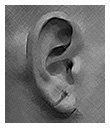Scientific Reasoning
Class Notes for Analogy

COURSE TOPICS
PRACTICE PROBLEMS
COURSE SERVICES
[an error occurred while processing this directive]
since 11.15.04
Scientific Reasoning
Department of History and Philosophy
Learning Center M33
Lander University
Greenwood, SC 29649
Criteria for Analogical Arguments
- Analogical arguments are inductive arguments whose
conclusion follows from the premisses with some
degree of probability.
- The conclusion of an analogical argument does
not follow with necessity. If the conclusion were to
follow with certainty, the so-called analogy would not
be analogous but would be a description equivalent
to the original circumstances.
- There are several factors which affect the probability
of analogical arguments as better or worse.
- The recognition of the presence or absence of these
factors affect the appraisal of the argument in a
qualitative rather than a quantitative manner.
- The conclusion of an analogical argument does
not follow with necessity. If the conclusion were to
follow with certainty, the so-called analogy would not
be analogous but would be a description equivalent
to the original circumstances.
- As an illustration for the following criteria consider
the following example:
- a Smith, b Jones, c Wilson, and d
Johnson have P creased earlobes, Q depressed
sternums, and R narrow hips.
- a Smith, b Jones, and c Wilson all have
the further property of S heart disease
- _____________________________________________
- Therefore, d Johnson probably has S heart disease as well.
- The number of entities, situations, or occasions
(among which the circumstances are said to hold in the
second premiss).
- The number of specific instances are the entities
listed as what might be called the data base,
i.e., in the example, a, b, and
c listed in the second premiss.
- The number of entities or instances is not precisely
related to the probability of the conclusion.
- This criterion is similar to the notion of induction
by simple enumeration—the more examples enumerated,
the higher the probability (ceteris paribus).
- Example: Specifically, the more the number of occasions of persons
who have the further property of heart disease (in addition
to the properties in the first premiss), the better the
evidence. E.g. more persons, say White, Zindler,
and McCall also were found to have creased earlobes,
depressed sternum, narrow hips, and heart disease.
- The number of specific instances are the entities
listed as what might be called the data base,
i.e., in the example, a, b, and
c listed in the second premiss.
- The number of respects, properties, or attributes
in which the entities are analogous (in the first premisss).
- The probability increases by the number of respects
denoted by P, Q, and R
- The number of respects is not precisely related to the
probability with which the conclusion follows.
- The respects listed in the first premiss are neither known
to have an invariable connection, nor are they know to be
unconnected.
- Example: The probability increases as the number of respects
increase, such as the addition of experiencing chest pain and
blackouts.
- The probability increases by the number of respects
denoted by P, Q, and R
- Strength of the conclusion relative to the premisses.
- If the stated conclusion is hedged, conservative, more
cautious, or guarded relative to the premisses, the probability
of the argument becomes stronger.
- "Playing it safe" or "under-rating" what
could be said increases the expectation the conclusion is
probable.
- Example: The probability of the conclusion increases
with the following sequence of possible properties to be substituted
in the conclusion: coronary heart disease ⇒ heart disease ⇒
heart trouble.
- If the stated conclusion is hedged, conservative, more
cautious, or guarded relative to the premisses, the probability
of the argument becomes stronger.
- Absence of the number of disanalogies or points of
difference between the entities in data base with respect to the
conclusion entity.
- The argument is weaker if there are many disanalogies between
a, b, c, and with d in the above schema.
- In other words, similarities between entities in the data base
and the conclusion strengthen the argument.
- Example: The probability increases if the person named in the
conclusion (i.e. Johnson) is from the same culture and race
as the persons named in the second premiss data base.
- The argument is weaker if there are many disanalogies between
a, b, c, and with d in the above schema.
- The more dissimilar the entities in the data base, the
stronger or more probable the argument.
- The conclusion is made more probable if the entities are varied
because the data base becomes broader and more inclusive.
- Hence, disanalogies between entities in the data base and the entity
in the conclusion are minimized by including more disimilar
entities.
- Example: Smith, Jones, Wilson, and Johnson (the persons named in
the first premiss) are from different cultures and races.
- The conclusion is made more probable if the entities are varied
because the data base becomes broader and more inclusive.
- The respects or attributes are relevant to the entities or
situations.
- This criterion is the most important.
- The points of resemblance must be relevant to the conclusion
drawn.
- Relevancy is often determined by a suspected causal or determining
effect.
- Example: Depressed sternum and heart disease are thought to be associated
with congenital heart defects.
- This criterion is the most important.
- a Smith, b Jones, c Wilson, and d
Johnson have P creased earlobes, Q depressed
sternums, and R narrow hips.
Example adapted from
Elliott WJ, Powell LH. Diagonal earlobe creases and prognosis
in patients with suspected coronary artery disease. Am J Med. 1996 Feb;100(2):205-11.
Shamberger RC, Welch KJ, Castaneda AR, Keane JF, Fyler DC. Anterior chest wall deformities
and congenital heart disease. J Thorac Cardiovasc Surg. 1988 Sep;96(3):427-32.
http://philosophy.lander.edu/scireas/FILE.html
[an error occurred while processing this directive]
Contact webmaster@philosophy.lander.edu
Please see the disclaimer concerning this page.
This page last updated 11.21.04
©2004 Licensed under the GFDL